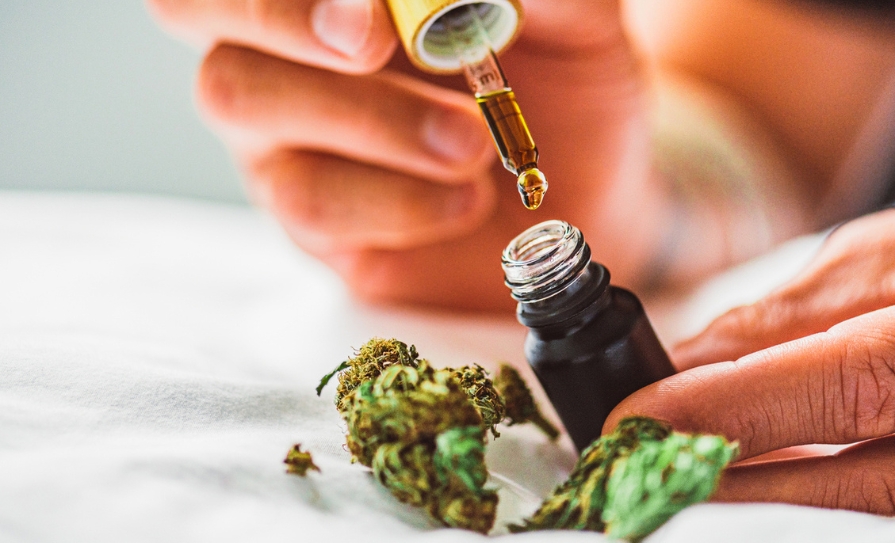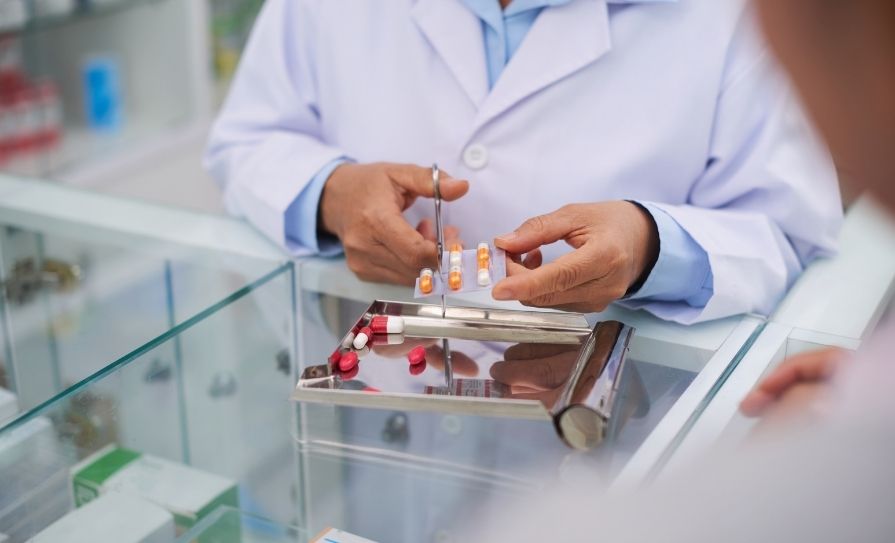Dr Des Corrigan looks at what might be the next ‘big thing’ in CBD products
I wonder how many of you are, like me, bemused at the multitude of CBD products on the market and even more bewildered by the seemingly endless and often unjustified medical claims made for this phytocannabinoid. Just when you thought that things could not get any more confusing, along comes another plant cannabinoid seeking its 15 minutes of fame. The compound in question is cannabigerol, or CBG, and it is known as the ‘mother of all the cannabinoids’ because it, or rather its acidic form (CBGA), is the first of the phytocannabinoids to be synthesised by cannabis plants. The remaining 119 known phytocannabinoids are all synthesised from this CBGA, which breaks down to CBG on storage or when heated.
CBG has the distinction of being the first compound to be isolated from cannabis resin as a pure substance way back in 1964. Because it occurs in very small amounts in both drug and hemp-type cannabis, there has been until very recently little interest in its potential uses. So, what has changed that has resulted in increased attention being focused on CBG? For a start, the rapid growth of the legal cannabis market in North America has led to the marketing of minor phytocannabinoids with what a 2024 article in Nature Scientific Reports described as “bold, but largely unsubstantiated, claims of their therapeutic potential”. Secondly, the extraction and purification of CBG from cannabis plants has until recently been challenging and expensive because of Image: iStock.com the low concentrations (less than 10% of the total cannabinoid mixture) in many types of the plant. Usually, three chemical varieties or chemotypes are recognised: THC dominant; CBD dominant (Hemp); and an intermediate type with equal amounts of THC and CBD.
A fourth chemotype is now recognised that is CBG-dominant, according to a 2021 review in Acta Pharmaceutica. Selective cultivation of the latter variety by some cannabis companies resulted in CBG levels constituting 90 per cent of total cannabinoids, compared to the more usual 10 per cent. Farmers in Oregon have succeeded in selectively growing plants capable of producing up to 20 per cent CBG, according to a 2022 study in Cannabis and Cannabinoid Research. That same year saw a paper in the journal Molecules, reporting on a Canadian biosciences company that had developed an engineered yeast strain with genes that encode four enzymes that convert hexanoic acid into CBGA. This is easily decarboxylated to 99 per cent-plus pure CBG in a sustainable and cost-effective process and cutting out the cannabis plant altogether. While there were some initial pharmacological studies on CBG in 1969, significant investigations only really started this century.
A 2022 review in the International Journal of Molecular Sciences noted that CBG had low affinity agonist activity at both CB1 and CB2 cannabinoid receptors but that it lacked the intoxicating effects of THC. Inevitably of course, this is usually described in terms of CBG being ‘non-psychoactive’, demonstrating a complete misunderstanding of what ‘psychoactive’ actually means. Why researchers cannot simply use ‘nonintoxicating’ is beyond me. Preclinical studies on CBG reviewed in the Nature article include evidence of antibacterial, antifungal and antihypertensive activity. CBG reduced intraocular pressure and also keratinocytes in a psoriasis model. Anti-depressantlike effects were noted in a rodent model, as were anti-inflammatory effects suggesting (according to the authors) that it may be effective in inflammatory bowel diseases. That paper also described a double-blind placebo-controlled field trial sponsored by a cannabis company that showed a significant effect of CBG (20mg) in the overall reduction of anxiety and stress, while enhancing verbal memory. Since this involved just 34 individuals tested via Zoom, it is obvious that much more higher-quality research is needed to confirm these results. Much of the ‘media noise’ about CBG centres on its potential as a so-called ‘cosmeceutical’ in skincare products.
A 2021 review dissecting the role of phytocannabinoids in skin health appeared in Planta Medica. Much of the review concentrated on the impact of CBD, but it did note that CBG could reduce inflammation, proliferation and differentiation in keratinocytes. A review in EvidenceBased Complementary and Alternative Medicine the following year stated that the anti-acne effects of CBG on the viability and proliferation of sebocytes supported the hypothesis that CBG might be useful in acne, but that clinical research was needed for confirmation.
The 2022 study in Molecules reported that CBG reduced levels of reactive oxygen species (ROS) in human dermal fibroblasts better than vitamin C and it also inhibits interleukin (1?, -6 and -8) as well as TNF? release induced by both UVA and UVB light, irritant chemicals such as the phorbol derivative TPA and Cutibacterium acnes (one of the causes of common acne). The authors then conducted a clinical study in 20 subjects using a 0.1% CBG in serum product and a placebo for two weeks after irritation was induced with sodium lauryl sulphate. The CBG serum showed a statistically significant improvement compared to the placebo for trans-epidermal water loss and reduced redness. Much more and higher-quality research is needed before CBG can be recognised as having skin health-boosting properties, as one article terms it, but I suspect that the cannabis supplement industry will not wait for evidence and that outlandish claims will be made on the basis of the early studies. After all, the playbook for doing so is well-established based on what has happened with CBD. One other low-level study in humans looked at the effects of CBG on delayed onset muscle soreness.
The Journal of the International Society of Sports Medicine in 2023 reported that there was only moderate evidence of reduced soreness after 72 hours. A 2022 online survey of individuals who self-reported using CBG-dominant cannabis referred to the perception that it improved anxiety, chronic pain, depression and insomnia. Adverse events included dry mouth, sleepiness, increased appetite and dry eyes. A more detailed safety study published in the International Journal of Molecular Sciences in 2024 found no evidence of cytotoxicity, mutagenicity or skin sensitisation including irritation, phototoxicity or photo-sensitisation, which is reassuring given the high level of interest in its skincare potential. The need for further detailed toxicity studies is highlighted in a 2023 review in the Journal of Bone and Mineral Research that looked at positive reports of pain alleviation in a mouse model of fracture healing and also noted safety in dogs, but mentioned that one study in rats given CBG for 90 days reported hepatotoxicity. Given our experience with CBD, this finding needs to be confirmed urgently before large numbers start dosing themselves with CBG supplements. So, I suggest that you get ready not only for a range of CBG products, but also for some containing other minor phytocannabinoids such as cannabichromene (CBC), tetrahydrocannabivarin, and not forgetting THC- acid (THCA), or ‘diamond’, which according to the UK’s Advisory Committee has appeared on the vape market there.







